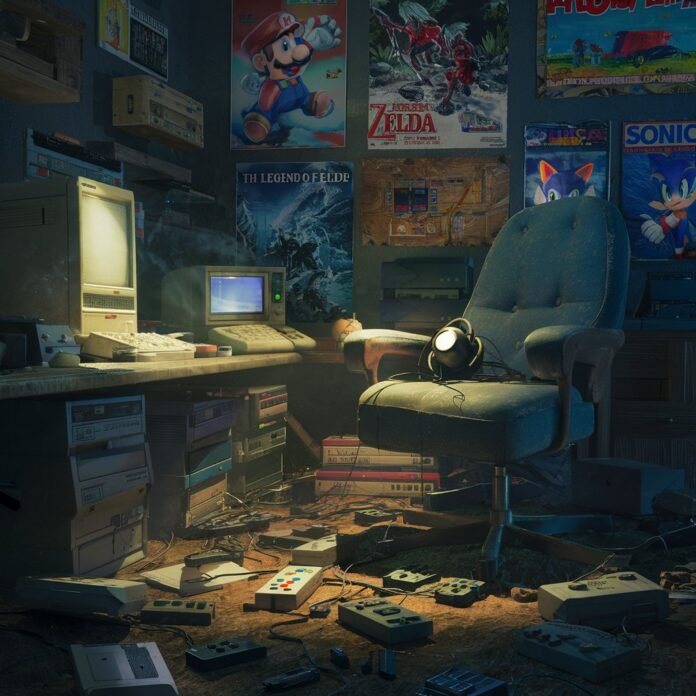Introduction
Step into The Game Archives, a sanctuary for the digital relics that have shaped generations of players and defined the evolution of interactive entertainment. Here, we don’t just catalog games—we celebrate their artistry, their history, and their cultural significance. From the bleeps and bloops of 8-bit pioneers to the photorealistic worlds of modern masterpieces, every title has a story worth preserving. This is more than a collection; it’s a tribute to the developers who pushed boundaries, the communities that kept classics alive, and the innovations that transformed pixels into profound experiences. Whether you’re here to revisit childhood favorites or uncover obscure gems, join us as we explore the past, present, and future of gaming’s enduring legacy.
Headings & Explanations
1. Why Game Preservation Matters: Saving Digital History Before It’s Lost
Video games are fragile. Unlike books or films, they rely on specific hardware, software, and often corporate goodwill to remain accessible. This section delves into the urgent need for game preservation, examining how titles vanish due to licensing issues, server shutdowns, or deteriorating physical media. We’ll spotlight initiatives like the Video Game History Foundation and the challenges they face—from legal gray areas to the technical hurdles of emulating obsolete systems. Most importantly, we’ll ask: If we don’t act now, what might we lose forever?
2. Time Capsules of Play: The Most Important Games Ever Made
Some games transcend entertainment to become cultural touchstones. Here, we curate a list of titles that redefined the medium, from Pac-Man’s arcade dominance to The Last of Us’ narrative ambition. Each entry will explore not just why these games were groundbreaking, but how they reflect the eras they were born in—whether it’s Tetris emerging from Cold War Russia or Deus Ex predicting post-9/11 paranoia. These aren’t just games; they’re historical documents.
3. Obsolete No More: The Art and Science of Game Restoration
What does it take to resurrect a forgotten game? This section goes behind the scenes with archivists and hackers who breathe new life into abandoned classics. We’ll cover fan-led projects like SM64 Online (which added multiplayer to Super Mario 64), official remasters like System Shock: Enhanced Edition, and the painstaking process of reverse-engineering games whose source code was lost. Along the way, we’ll confront ethical questions: When does restoration become piracy? Who gets to decide how old games should be experienced today?
4. The Human Archive: Oral Histories of Gaming’s Unsung Heroes
Beyond the code and pixels are the people—many of whom never got proper credit. Through interviews and recovered documents, we’ll spotlight stories like the female programmers of King’s Quest, the LGBTQ+ developers behind 90s cult hits, and the immigrant laborers who assembled consoles in factories. These narratives reveal how games were truly made, challenging the myth of the lone genius creator and highlighting the collaborative, often messy reality of game development.
5. When Corporations Erase History: The Fight for Abandoned Games
From PT’s infamous delisting to Scott Pilgrim vs. The World: The Game’s miraculous return, this section investigates how corporate decisions can rewrite gaming’s accessible history. We’ll analyze cases where publishers actively suppress their own legacy (like Nintendo’s stance on ROMs), contrast them with positive examples like Microsoft’s backward compatibility program, and explore how preservationists work around these obstacles through piracy, private servers, and legal advocacy.
6. Playable Museums: How Institutions Are Curating Game Culture
Museums worldwide now recognize games as art—but how do you exhibit something interactive? We’ll tour groundbreaking exhibits like the Smithsonian’s The Art of Video Games, the Strong Museum of Play’s eGameRevolution, and digital archives like the Internet Archive’s software library. Special attention goes to preservation techniques, from MAME arcade cabinets to VR recreations of vintage gaming spaces, asking: What’s the best way to let future generations experience (not just see) gaming history?
7. Your Role in Preservation: How Gamers Can Save the Medium
Preservation isn’t just for professionals. This practical guide empowers readers to contribute, whether by legally dumping their old cartridges with tools like the Retrode, documenting obscure mods on the Cutting Room Floor wiki, or simply recording Let’s Plays of delisted games. We’ll also discuss ethical collecting (avoiding price-gouged retro games) and how to advocate for better industry preservation standards.
Conclusion
The Game Archives isn’t just about looking backward—it’s about ensuring that future players can learn from, critique, and enjoy the games that defined our cultural landscape. Every ROM file recovered, every developer interview recorded, and every forgotten game resurrected is a victory against digital decay. As the industry races toward an all-streaming future, our mission grows more vital: to prove that games are worth saving, not just as products, but as the 21st century’s most dynamic art form. The controllers may gather dust, but the stories they tell must never fade.



